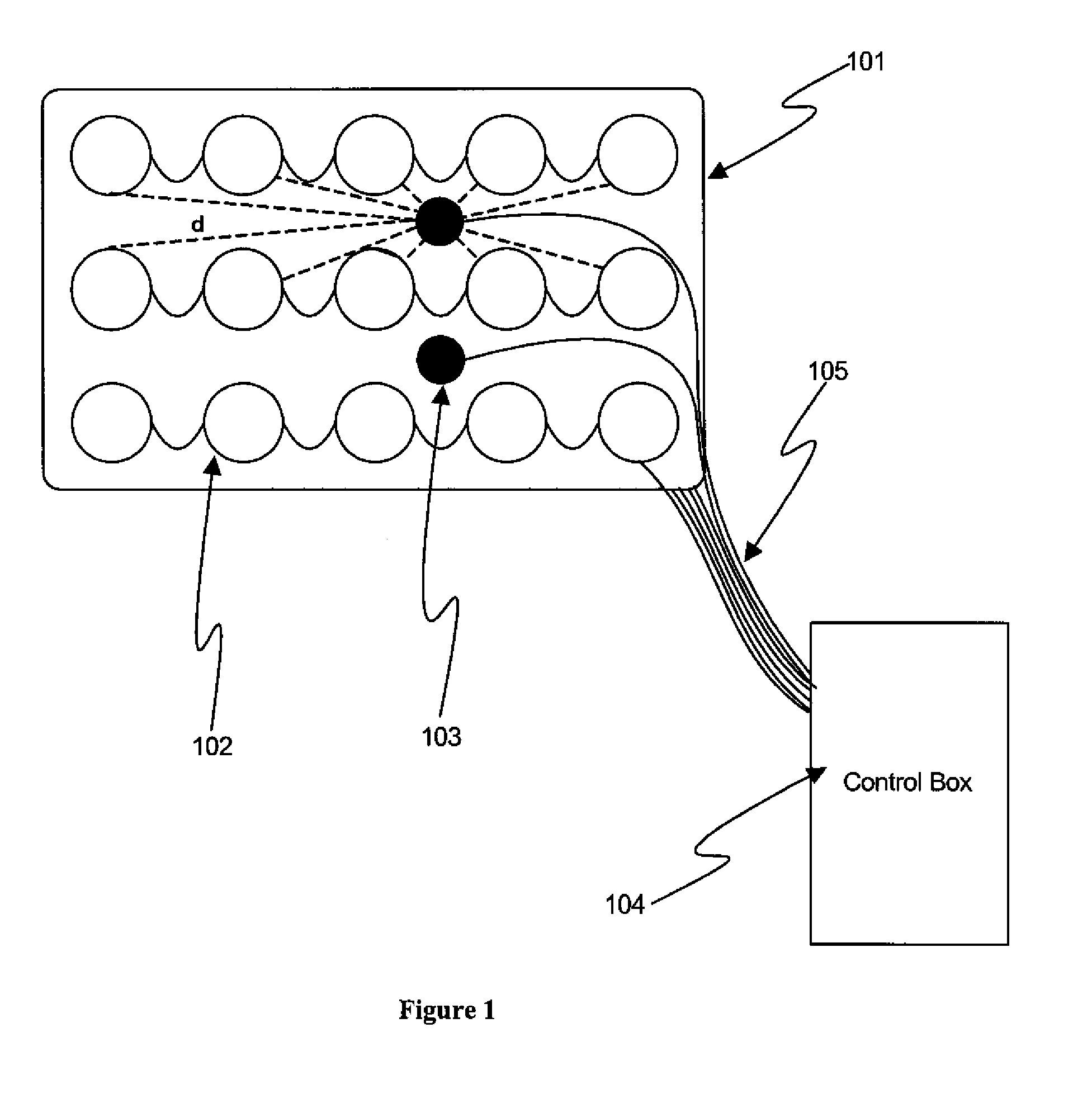Systems and methods for automated muscle stimulation
a muscle stimulation and automated technology, applied in the field of systems and methods for automated muscle stimulation, can solve the problems of insufficient use of nmes in the icu setting, labor-intensive nature of current nmes devices, and iterative adjustment process to achieve optimal results, etc., to prevent or retard muscle atrophy, abnormal skin sensation, and limited use
- Summary
- Abstract
- Description
- Claims
- Application Information
AI Technical Summary
Benefits of technology
Problems solved by technology
Method used
Image
Examples
Embodiment Construction
[0044]While preferable embodiments of the invention have been shown and described herein, it will be obvious to those skilled in the art that such embodiments are provided by way of example only. Numerous variations, changes, and substitutions will now occur to those skilled in the art without departing from the invention. It should be understood that various alternatives to the embodiments of the invention described herein may be employed in practicing the invention.
[0045]Stimulation and Sensing Electrodes within Same Pad
[0046]FIG. 1 shows, in accordance with an embodiment of the invention, an array of electrodes placed within a thin, flexible housing 101. The thin flexible housing may be connected to one or more stimulating electrode 102 and / or one or more sensing electrode 103. A control box 104 may be electrically connected to the one or more stimulating electrode and / or the one or more sensing electrode. The control box may communicate with the electrodes through a series of wi...
PUM
 Login to View More
Login to View More Abstract
Description
Claims
Application Information
 Login to View More
Login to View More - R&D
- Intellectual Property
- Life Sciences
- Materials
- Tech Scout
- Unparalleled Data Quality
- Higher Quality Content
- 60% Fewer Hallucinations
Browse by: Latest US Patents, China's latest patents, Technical Efficacy Thesaurus, Application Domain, Technology Topic, Popular Technical Reports.
© 2025 PatSnap. All rights reserved.Legal|Privacy policy|Modern Slavery Act Transparency Statement|Sitemap|About US| Contact US: help@patsnap.com



